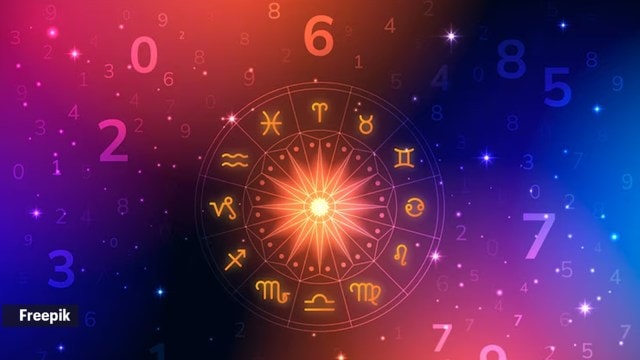
What is Ophiuchus?
The debate on whether there is a 13th zodiac sign has been going on for a while now, said Dr Kashish Parashar, an astrologer, numerologist, and face reader.
Story continues below this ad
Agreeing, Kishori Sud of Enigma Tarot Tribe informed indianexpress.com that this came up in 2011 when NASA shared another constellation: Ophiuchus. “It is located between Sagittarius and Scorpio’s constellation. However, this is more of a recent development; for us, it (still) is 12 zodiac signs. Ophiuchus is for dates between November 29 and December 17. In terms of the description, it is represented by a man with a serpent, which means wisdom, healing, and change. If you can co-relate with the elements of Ophiuchus, go for it, but traditionally, it is not so significant,” Sud elaborated.
Why isn’t it significant?
For thousands of years, astrology has been based on the 12-sign zodiac system, aligning with the ecliptic—the Sun’s apparent path over a year—and its connection to Earth’s natural cycles and seasons, explained astrologer Saloni Chaudhary.
The concept of the zodiac is prominent in two ancient civilisations: Greek and Indian, said an astronomy enthusiast Aditya J, Amateur Astronomers Group. “In both traditions, the zodiac plays a significant role. The term zodiac originates from the Latinized Ancient Greek zodiakòs kýklos, meaning “circle of little animals.” In Indian civilization, the zodiac is referred to as Rashi.
In India, the study of the zodiac can be understood through two fields: Jyotish (Astronomy) and Phal Jyotish (Astrology), noted Aditya. “While people often associate the zodiac with astrology and life predictions (a topic open to debate), here we will focus on its scientific foundation within Indian astronomy or Jyotish. Indian astronomy identifies 12 Rashis: Aries, Taurus, Gemini, Cancer, Leo, Virgo, Libra, Scorpio, Sagittarius, Capricorn, Aquarius, and Pisces. These correspond to the constellations that the Sun passes through during its journey across the sky in a year, starting from Mesh (Aries) and ending at Meen (Pisces),” said Aditya.
Story continues below this ad
 Ophiuchus as the 13th zodiac sign? (Source: Wikimedia Commons)
Ophiuchus as the 13th zodiac sign? (Source: Wikimedia Commons)
According to Rachit Dua, a vedic astrologer and palmist, and founder, The Astro GPS, the sky was considered a 360-degree circle divided into 12 zodiac signs, each covering approximately 30 degrees. Aditya explained the mathematical calculation: “The Earth follows an elliptical orbit around the Sun, completing one revolution in approximately 365 days. If we designate a starting point (Point A) and an endpoint (Point B)—essentially the same as Point A—the Earth takes 365/366 days to complete a 360° journey. Dividing this full circle into 12 segments (360° ÷ 12 = 30°), each Rashi spans 30°,” said Aditya.
Aditya added that the Earth moves approximately 0.9856° per day along its orbit, roughly 1° per day for simplicity. “This means the Sun appears to stay in one Rashi for about 30 days, aligning with the 12 months in a calendar year. Modern astronomy apps allow us to visualise this movement accurately,” said Aditya.
A sign of the zodiac is noted by 1 of the 12 constellations that the sun passes by. The “fuss” about the 13th planet, according to Dr Parashar, occurs because of the 13th constellation in the northern sky named Ophiuchus, which the sun passes by from November 29 to December 17. “The reason this 13th constellation was ignored as a zodiac was to align the 12 zodiac signs to the 12 months already in the calendar based on the moon faces to keep it simple and uncomplicated,” said Dr Parashar.
Agreeing, Chaudhary mentioned that adding Ophiuchus would disrupt this system’s cultural, symbolic, and spiritual significance. “The 12 zodiac signs represent archetypes tied to the 12 months of the year, the 12 astrological houses, and other symbolic systems like the 12 apostles or Hercules’ 12 labours. Including a 13th sign would upset this harmony, altering the meanings and placements that astrologers have relied on for centuries,” Chaudhary told indianexpress.com.
Story continues below this ad
Therefore, experts consider Ophiuchus to be a constellation and not a zodiac sign.
Abhijita Kulshrestha, a Vedic astrologer, finds it a “bit unnecessary to tinker with the basics.” “The sudden need to have a 13th zodiac sign, or to determine whether Pluto is a planet, or to direct attention towards different and curiosity-inducing information can serve people well who keep looking for novelty to satisfy that human craving. However, in this age of tremendous pressure for content generation, one can create a debate around anything. This does not mean that I am not open to exploration. Still, I do find the idea of tinkering with the basics a bit unnecessary,” commented Kulshrestha. She was seconded by Nakshatra Tanwar, an IITian and a practicing astrologer who said that astrology focuses “less on the stars’ exact positions” and more on the patterns and energies they symbolise.
“While Ophiuchus may be fascinating from an astronomical perspective, its inclusion in astrology is unnecessary. The 12-sign system, refined over millennia, continues to offer meaningful guidance, self-awareness, and understanding of cosmic energies,” said Chaudhary.
“So as long as NASA does not officially announce a new 13th planet, you can continue to read your horoscope as it is,” said Dr Parashar.
Story continues below this ad
DISCLAIMER: This article is based on information from the public domain and/or the experts we spoke to. Always consult your health practitioner before starting any routine.



 Ophiuchus as the 13th zodiac sign? (Source: Wikimedia Commons)
Ophiuchus as the 13th zodiac sign? (Source: Wikimedia Commons)

























